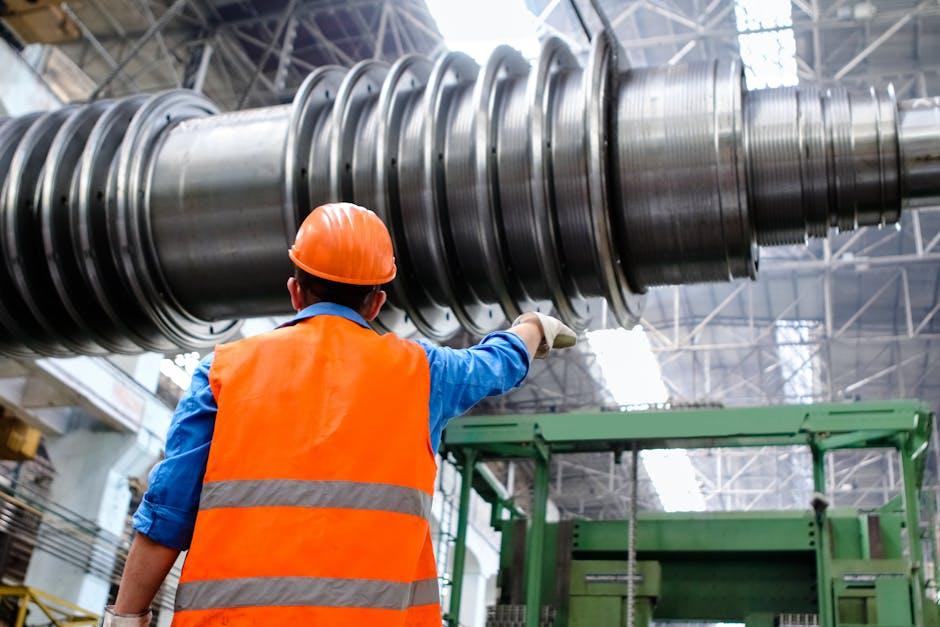Table of Contents
- Understanding the Benefits of Solar Panels for Pool Heating
- Key Factors to Consider When Choosing Solar Pool Heating Systems
- Installation Tips for Maximizing Solar Efficiency in Pool Heating
- Comparing Different Solar Panel Options for Pool Heating
- Maintenance Practices to Ensure Longevity of Your Solar Heating System
- Q&A
- Wrapping Up
Understanding the Benefits of Solar Panels for Pool Heating
Harnessing the power of the sun to heat your pool offers a multitude of advantages that not only enhance your swimming experience but also contribute to a more sustainable lifestyle. By utilizing solar panels, you can significantly reduce energy costs associated with traditional heating methods. The initial investment in solar technology is offset by the considerable savings on utility bills, particularly during peak swimming seasons when you want to maintain a comfortable water temperature.
In addition to financial benefits, solar panels are an environmentally friendly option. They produce clean, renewable energy that reduces your carbon footprint. By opting for solar heating, you are taking a proactive step towards sustainability, minimizing reliance on fossil fuels. This commitment aligns with a growing trend toward responsible living, appealing to environmentally conscious individuals and families.
Moreover, solar pool heating systems are generally low-maintenance and designed for longevity. With robust materials and technology, these systems can provide reliable service for years. Features might include:
- Durability: Built to withstand various weather conditions.
- Efficiency: Advanced designs maximize heat absorption.
- Versatility: Suitable for various pool sizes and types.
| Feature | Benefit |
|---|---|
| Cost Savings | Reduced heating bills. |
| Eco-friendly | Lower carbon emissions. |
| Long Lifespan | Years of reliable service. |


Key Factors to Consider When Choosing Solar Pool Heating Systems
When selecting a solar pool heating system, it’s essential to consider the size of your pool and the system’s capacity. A properly sized system will efficiently heat the water to your desired temperature, ensuring comfortable swimming conditions year-round. Measure your pool’s surface area and analyze the amount of sunlight it receives daily. A good rule of thumb is that the solar collector’s surface area should be around 50%-100% of the pool’s surface area for optimal performance.
Another critical factor is the climate and geographical location. Different regions have varying sunlight exposure, which affects how effectively solar panels can heat your pool. If you live in a consistently sunny area, a smaller system may suffice. However, if your region experiences frequent cloud cover or shorter daylight hours, you might need a more extensive setup. Take into consideration seasonal changes and temperature fluctuations to gauge the amount of heating you’ll require throughout the year.
Lastly, evaluate the type of solar heating system that will best meet your needs. Options include glazed systems, which are more efficient in colder climates, and un-glazed systems, ideal for warmer areas. There are also innovative technologies, such as portable solar heaters and integrated systems for easier installation. Additionally, check for warranties and the manufacturer’s reputation to ensure you’re investing in a durable and reliable product that will serve you well for many seasons to come.


Installation Tips for Maximizing Solar Efficiency in Pool Heating
When it comes to optimizing solar panels for pool heating, the right installation can make a significant difference in efficiency. First, consider the location of your panels. Ideally, they should be installed on a rooftop or an elevated area that receives ample direct sunlight throughout the day, preferably for at least six hours. Additionally, make sure there’s minimal shading from trees, buildings, or other structures that could block sunlight access.
Proper angle and orientation are also crucial factors. Solar panels are most effective when tilted at an angle that matches your geographical latitude. This positioning allows the panels to capture the sun’s rays more effectively as the seasons change. For most residential installations, a south-facing direction is optimal; however, east or west-facing panels can still provide good results, especially if your pool heater needs it during specific times of the day.
Lastly, don’t underestimate the importance of maintaining a closed-loop system. Ensure that your plumbing connections are airtight to prevent losses in heat. Additionally, using a transparent cover or a heat blanket during the night can help retain the warmth in your pool. Regularly checking and cleaning the panels will maximize their performance, while also allowing for better heat transfer to your swimming pool.


Comparing Different Solar Panel Options for Pool Heating
When evaluating solar panel options for heating your pool, it’s essential to understand the different types available on the market. Two popular choices are flat plate collectors and evacuated tube collectors. Flat plate collectors are generally more affordable and easier to install, making them ideal for homeowners looking for a straightforward solution. They capture sunlight through a large flat surface and transfer the heat effectively to the pool water. On the other hand, evacuated tube collectors utilize multiple glass tubes that create a vacuum, improving thermal efficiency, especially in colder climates. This efficiency can lead to quicker heating times, albeit at a higher initial investment.
Another factor to consider is the size of the solar panel system you will need for optimal pool heating. The size depends on several criteria, including pool area, location, and desired temperature increase. Below is a simplified guide to help you gauge the number of panels you might require:
| Pool Size (sq ft) | Panel Size Needed (sq ft) |
|---|---|
| 200 | 100 |
| 400 | 200 |
| 600 | 300 |
Lastly, it’s important to evaluate the longevity and maintenance requirements associated with different solar heating options. Many systems offer warranties ranging from 10 to 25 years, ensuring peace of mind with a significant investment. Regular maintenance is generally minimal, but flat plate collectors often require more periodic checks to ensure optimal performance due to their exposure to elements. Conversely, evacuated tube collectors, whilst slightly more complex, often prove to be more durable, making them a preferred choice for long-term use in variable weather conditions. Choosing the right solar panel heating system can significantly enhance your pool experience, making it warm and enjoyable throughout the year.


Maintenance Practices to Ensure Longevity of Your Solar Heating System
To effectively maintain your solar heating system and ensure it operates at peak efficiency, it’s essential to follow a consistent routine of inspections and cleanings. Start by checking the solar panels for any debris such as leaves or dirt that can block sunlight. Regular cleaning can greatly enhance the performance of your system. Use a soft brush or a sponge with mild soapy water to gently clean the panels, ensuring you don’t scratch the surface. Aim to conduct these cleanings at least twice a year, or more frequently if your system is located in a dusty environment.
Another critical maintenance practice involves monitoring the fluid levels in the system. Over time, the antifreeze or pool water used in the solar heating system may deplete due to evaporation or leaks. Regularly check for leaks in the plumbing and ensure that the fluid levels are as recommended by the manufacturer. Performing these checks can help prevent costly repairs and ensure that your heating system continues to function optimally throughout the swimming season.
| Maintenance Task | Frequency | Details |
|---|---|---|
| Inspect Solar Panels | Every 6 months | Check for debris and clean as necessary. |
| Fluid Level Check | Monthly | Ensure antifreeze or pool water levels are adequate. |
| System Inspection | Annually | Look for leaks, structural issues, or parts that may need replacement. |
Additionally, consider investing in a professional maintenance service annually, as they can provide a more in-depth inspection and or repairs that may not be visible during your routine checks. Expert technicians can also ensure your system operates safely and efficiently, extending its lifespan significantly. By implementing these practices, you’ll not only safeguard your investment but also enjoy a consistently warm pool, ready for enjoyment whenever you choose.
Q&A
Q&A: Solar Panels to Heat Your Pool
Q1: How do solar panels work to heat my pool? A1: Solar panels capture sunlight and convert it into energy. When installed on your property, usually on a rooftop or a dedicated area, these panels use photovoltaic cells to absorb sunlight. This energy is then used to heat water that circulates through your pool, ensuring a warm swimming experience without relying on traditional heating methods.Q2: What are the benefits of using solar panels to heat my pool? A2: The primary benefits include cost savings, energy efficiency, and environmental friendliness. Unlike gas or electric pool heaters, solar systems harness renewable energy from the sun, which can significantly reduce your utility bills. Moreover, using solar energy helps minimize your carbon footprint, contributing to a healthier planet.
Q3: Are solar pool heaters effective in all climates? A3: While solar pool heaters are most effective in sunny climates, they can still work in areas with moderate sunlight. However, you might need a larger solar panel system or a backup heat source in regions that experience longer cloudy periods or cooler temperatures to maintain a comfortable pool temperature.
Q4: How much does it cost to install solar panels for my pool? A4: The cost varies based on your location, the size of your pool, and the type of solar panels you choose. On average, you can expect to invest between $3,000 and $7,000 for a complete solar pool heating system. While this may seem steep initially, consider the long-term savings on energy bills and potential increases in property value.
Q5: What maintenance is required for solar pool heating systems? A5: Solar pool heating systems are generally low-maintenance. Regularly check for debris on the solar panels and ensure that they’re clear to maximize sunlight exposure. Additionally, inspect the plumbing for leaks or damages, and consider professional maintenance every couple of years to keep the system working efficiently.
Q6: Can I use solar panels for heating my pool directly, or do I need a separate system? A6: You can use dedicated solar thermal panels specifically designed for heating pool water directly. These panels are distinct from photovoltaic solar panels, which generate electricity. If you want to combine both systems for broader energy savings, consult a professional to see what option best fits your needs.
Q7: Will solar heating affect my pool’s chemical balance? A7: Solar heating shouldn’t negatively impact your pool’s chemical balance. However, be aware that warmer water can increase the rate at which algae and bacteria grow, necessitating more vigilant maintenance of your pool’s chemical levels. Regularly test your water and adjust as needed.
Q8: How long does it take for solar panels to heat my pool? A8: The heating time can vary based on ambient temperature, the size of your solar panel system, and the volume of water in your pool. On average, you can expect the temperature to rise by about 1°F to 3°F per sunny day, making it essential to factor in several sunny days for significant heating.
Q9: Are there any rebates or incentives for installing solar pool heaters? A9: Many regions offer incentives for renewable energy systems, including tax credits and rebates for solar installations. Check with local governments and utility companies to see what programs are available in your area, which can help offset the initial cost of installing solar heating for your pool.
Q10: What size solar panel system do I need for my pool? A10: The size of the solar panel system you need depends on your pool’s area and average desired temperature increase. Generally, aim for a solar panel array that covers about 50-100% of your pool’s surface area. A professional installer can perform a detailed assessment and help determine the exact requirements for your situation.—This Q&A aims to provide you with insights into the functionality, benefits, and considerations of using solar panels to heat your pool, ensuring you’re equipped with the knowledge you need to make an informed decision.



0 Comments